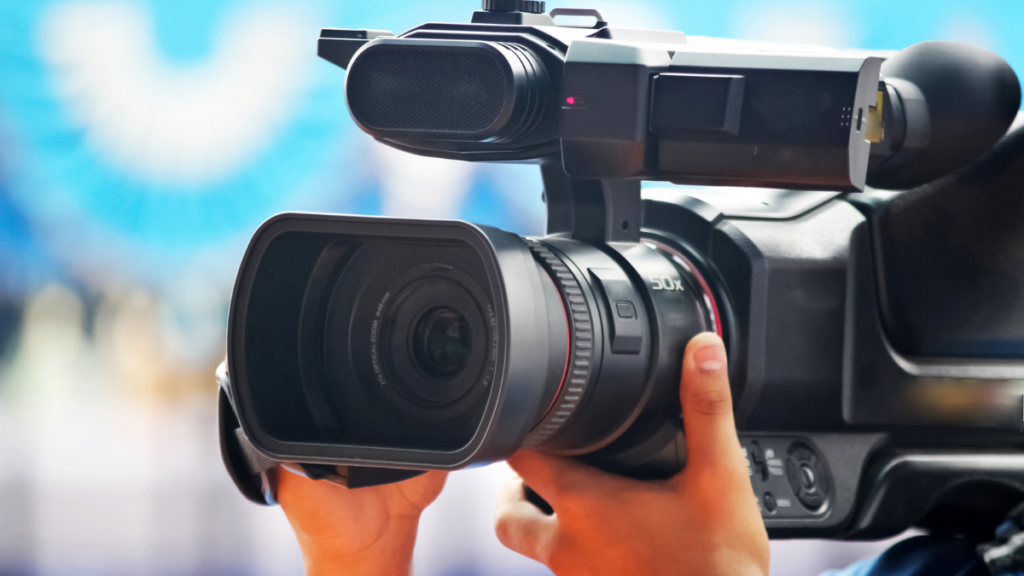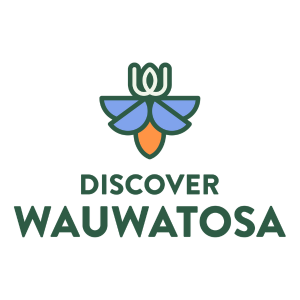How to Incorporate Video into Your Meeting
04/07/2025
By Amanda N. Wegner
Lights, camera, action are words most people associate with a Hollywood film set, not a corporate meeting or event.
However, the meetings and events industry thrives on creating experiences and video is a fantastic way to capture attention and foster engagement at every event planning stage, from pre-event promotion to post-event follow-up.
“Video is a highly effective communication tool that helps bring interest and credibility to your event,” says Natalie Hinckley, owner of Hinckley Productions, a Wisconsin company that creates branding video content and live event video production. “Done right, it can be an asset to leverage for much longer than the duration of your event alone.”
To avoid falling behind, Noelle Schneider, co-owner of Fatbird Creative, a creative cooperative, says integrating video into your marketing is a must.
“With the studies to back it up, video content is at the top of the list to bring awareness, create engagement, make conversions, and amplify your message!” she says.
RESEARCH AND PLAN BEFORE THE CAMERA ROLLS
Start with a solid plan that includes research, planning, implementation and evaluation before making video marketing part of your meeting or event strategy.
“Video folds into a marketing plan, leading up to, during and after an event,” Hinckley explains.
Schneider adds that delivering the best message involves research, staying on top of the latest trends, observing what is being done in video worldwide, and analyzing data.
To start, she says to get crystal clear on the goal of your event’s video marketing strategy. Do you want to:
- Create a vibe and draw interest to drive attendance and registrations?
- Share information, such as event details or what to expect?
- Make a splash with a new product or offering?
Knowing the answers to these questions is critical to determining your audience and the best video format and platforms for developing your video marketing strategy, she adds.
Next, know your audience and tailor your message to their interests and current situations. Also, Hinckley adds, it’s important to decide early if your content is for public viewing or private use. “This is a significant driver for the type and format of video needed,” she stresses.
“The demographic you are targeting will determine the direction of your messaging and creative strategy and identify where those individuals are viewing their content,” says Schneider, who is based in Lake Mills. She stresses this information helps identify the right platforms to post video.
With so many online platforms available, Hinckley recommends starting small. “Keep in mind you can always change if it’s not meeting your needs,” she says.
When planning the actual videos, keep them short and to the point. One to two minutes long is sufficient for sales and promotional videos used on a website or in an email, which is “where you have attention,” says Hinckley. Videos used for social media or digital marketing should be even shorter — 30 seconds or less — and designed to generate awareness and build visibility.
As part of your plan, remember supporting pieces, such as interviews and testimonials, which can be used as content leading up to an event to draw attendees, drive registration, and build buzz for the meeting or event.
Also, don’t think video marketing is just to attract attendees, Hinckley adds. Video can — and should be used — to attract speakers or panelists and meeting or event sponsors.
“Once you have your spots, ideally, they do an excellent job of capturing your event and can be used for various applications. Or you can adjust them or dial in on messaging to use that is specific to your audiences, such as attendees versus sponsors,” she says.
HOW TO HARNESS THE POWER OF VIDEO
Want to harness the power of video but aren’t sure how it might fit into your meeting or event? Here are some suggestions:
- Promotional Videos: Whether a highlight reel of last year’s notable notes or a fresh, new speaker interview series to pique interest, a captivating video can be the cornerstone of your pre-event promotional marketing.
- Showcase the Venue: Immerse potential attendees in the event experience with a virtual tour, particularly if your meeting or event is slated for an exciting venue or destination. Highlight key features of the event and space, as well as the destination’s allure and potential activities that attendees can pursue during non-meeting hours.
- Spotlight Speakers: Introduce your more esteemed keynotes, speakers and panelists through short video interviews, highlighting their expertise and topics they’re covering. This can increase attendee interest in specific sessions and encourage them to pre-plan their conference schedule.
- Influencer Marketing: Schneider identifies influencer marketing as a trend on Fatbird Creative’s radar. Influencer marketing is a way to leverage another individual’s online/social presence to bring awareness to your brand, product or service, which can be beneficial — when done right. She stresses it is critical to vet the influencer and to ensure they are recognized by, and are the right fit, for your audience.
- Testimonials and Successes: Feature testimonials from past attendees or highlight the success stories of previous events. Seeing the positive impact of past events builds trust and motivates potential attendees to register. Also, at the event, capture new testimonials for future promotional materials and event proposals to sho wcase the value your events deliver.
- Interactive Features: Enhance engagement through interactive video elements. Consider live Q&A sessions during streamed presentations or polls and surveys embedded within videos to capture audience feedback.
- Live-Streaming: Even if your meeting or event is primarily in-person, take it global by live-streaming key sessions or keynote addresses. This allo ws remote attendees to participate in real time, expanding your reach and maximizing event impact. It also provides an additional revenue opportunity. With live-streaming, Hinckley reminds planners of the opportunity to provide better accessibility through captions and sign language interpreters.
- Capture Memorable Moments: During the event, record presentations, award ceremonies, or networking events. Edited highlights can be repurposed for future marketing campaigns or shared with attendees as a post-event memento.
- Recap Videos: The memorable moments captured can also create a captivating recap video to reignite event buzz. Share this summary on social media or your event website, reminding attendees of the key takeaways and the overall experience. Then, rinse and repeat this content for the next event.
- On-Demand Content: Offer recorded presentations or sessions as on-demand content for registered attendees or as a valuable investment for non-attendees. This allo ws attendees to revisit key information and extend the experience beyond the event. “Recording events helps to extend the life of an event, with the ability to continue to grow revenue or be used as another marketing tool for future events,” Hinckley says.
- Animations: According to Schneider, animation is becoming more prevalent in video marketing and allows limitless creative possibilities. Animation makes for a great explainer video or a way to introduce interactive content.
Reflecting on his 32 years in television news, former reporter Bill McGinty reveals the key elements of a great video story as this: “Real people and real emotion. If we can reach people and get them to feel something, laughter, sadness, anger, then the project was worth doing.”
Schneider agrees, noting planners can accomplish a lot with video.
“Video is the perfect way to gain momentum and excitement around a product launch, an upcoming event or service you offer. Using the right style and platform for your audience is key to a successful event. It is important to creatively use unusual content to grab and maintain the viewers’ attention in a world where attention spans are declining. Stand out from the crowd!”











